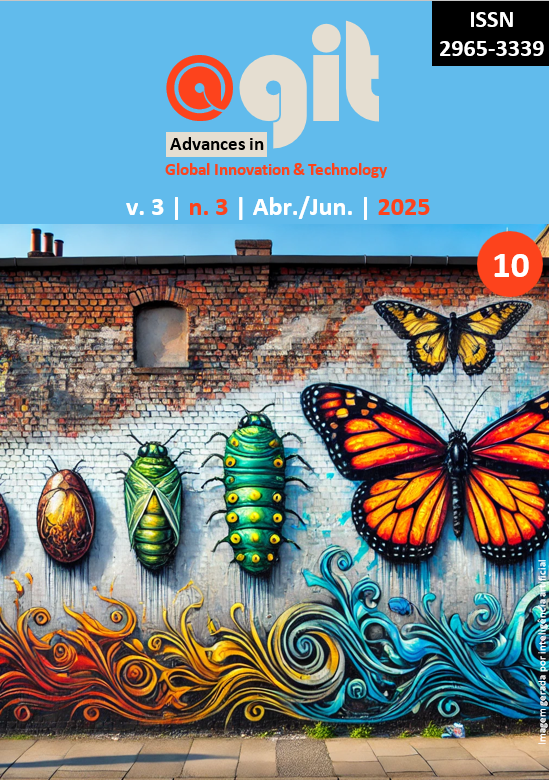Workflow Architecture to Optimize Processes in an Oncology Clinic
DOI:
https://doi.org/10.29327/2384439.3.3-6Keywords:
Workflow, BPMN, Architectural Views of Software, FURPS+Abstract
Efficient workflow management is essential for oncology clinics, aiming to ensure quality care and treatment effectiveness. This paper proposes a solution based on a workflow architecture to optimize clinical processes in an oncology clinic, with a focus on operational efficiency. The proposal is based on documentary research and literature reviews of clinical requirements, as well as the definition of an adapted architecture, using modeling techniques to ensure scalability, security, and maintainability. Diagrams with UML and BPMN notations are presented as a foundation for future projects, aiming at the unification and automation of workflows. The results obtained cover the first two stages of the architectural lifecycle (requirements analysis and design). Although this proposal does not involve full implementation, it provides a robust framework for the future development of functional, cohesive, and maintainable software systems, with the need for practical validations.
Downloads
References
AALST, W. V. D. Workflow Management: Models, Methods, and Systems. Cambridge: The MIT Press, 2004.
BASS, L.; CLEMENTS, P.; KAZMAN, R. Software Architecture in Practice. 3. ed. New Jersey: Person Education, 2012.
BOOCH, G.; JACOBSON, G.; RUMBAUGH, J. UML: Guia do usuário. 2. ed. Rio de Janeiro: Elsevier, v. I, 2005.
BULCÃO-NETO, R. F.; NETO, V. V. G.; MACEDO, A. A. A reference architecture for healthcare systems with coded terminology support. In: Intermountain Engineering, Technology and Computing (IETC), 2022, Orem, UT, USA. Anais… 2022. p. 1-6. DOI: 10.1109/IETC54973.2022.9796889.
CAMUNDA. Camunda Platform. Disponível em: https://camunda.com. Acesso em: 5 nov. 2024.
CHAUDHRY, B.; WANG, J.; WU, S.; MAGLIONE, M.; MOJICA, W.; ROTH, E.; MORTON, S.; SHEKELLE, P. Systematic review: impact of health information technology on quality, efficiency, and costs of medical care. Annals of Internal Medicine, v. 144, n. 10, p. 742-752, 2006. DOI: 10.7326/0003-4819-144-10-200605160-00125.
DE RAMÓN FERNÁNDEZ, A.; RUIZ FERNÁNDEZ, D.; SABUCO GARCÍA, Y. Business process management for optimizing clinical processes: a systematic literature review. Health Informatics Journal, v. 26, n. 2, p. 1305-1320, 2020. DOI: 10.1177/1460458219877092.
EELES, P. Capturing architectural requirements. IBM Rational Developer Works, 2001. Disponível em: https://www.researchgate.net/publication/329760910_Capturing_Architectural_Requirements. Acesso em: 20 jun. 2023.
GOOCH, P.; ROUDSARI, A. Computerization of workflows, guidelines, and care pathways: a review of implementation challenges for process-oriented health information systems. Journal of the American Medical Informatics Association (JAMIA), v. 18, n. 6, 2011. Disponível em: https://doi.org/10.1136/amiajnl-2010-000033. Acesso em: 16 out. 2024.
JACOBSON, I. Object-Oriented Software Engineering: A Use Case Driven Approach. Boston: Addison-Wesley, 1992.
KRUCHTEN, P. The 4+1 View Model of Architecture. ResearchGate, nov. 1995. Disponível em: https://www.researchgate.net/publication/220018231_The_41_View_Model_of_Architecture. Acesso em: 24 out. 2024.
LARMAN, C. Utilizando UML e Padrões. 3. ed. Porto Alegre: Bookman, 2007.
MARTIN, R. C. Arquitetura Limpa - O Guia do Artesão para Estrutura e Design de Software. 1. ed. Rio de Janeiro: Alta Books, 2019.
PRESSMAN, R. Engenharia de Software: Uma Abordagem Profissional. 9. ed. Porto Alegre: AMGH, 2011.
PUFAHL, L.; ZERBATO, F.; WEBER, B.; WEBER, I. BPMN in healthcare: challenges and best practices. Information Systems, v. 107, 2022, p. 102013. DOI: 10.1016/j.is.2022.102013.
SILVER, B. BPMN 2.0 Handbook: Methods, Concepts, Case Studies and Standards. 1. ed. Florida: Layna Fischer, 2012.
SOMMERVILLE, I. Engenharia de Software. 9. ed. São Paulo: Person, 2011.
TUMMERS, J.; TOBI, H.; CATAL, C. Designing a reference architecture for health information systems. BMC Medical Informatics and Decision Making, v. 21, n. 210, 2021. Disponível em: https://doi.org/10.1186/s12911-021-01570-2. Acesso em: 27 out. 2024.
WINCHESTER. Workflow patterns. 1999. Disponível em: . Acesso em: 28 maio 2023.
Downloads
Published
How to Cite
Issue
Section
License
Copyright (c) 2025 Igor Amaral Martins, Wilson Vendramel

This work is licensed under a Creative Commons Attribution-NonCommercial-ShareAlike 4.0 International License.
Copyright Policy
By submitting a manuscript for publication in the journal Advances in Global Innovation & Technology (@_GIT), authors agree, in advance and unrestrictedly, to the following terms:
- The authors retain the copyright and grant to the Journal Advances in Global Innovation & Technology (@_GIT) the right of first publication of the manuscript, without any financial burden, and waive any other remuneration for its publication in the Journal of Advances in Global Innovation & Technology (@_GIT).
- Upon submission to the Journal of Advances in Global Innovation & Technology (@_GIT), the manuscript is automatically licensed under the Creative Commons Attribution License, which allows the sharing of the work with acknowledgment of authorship and initial publication in the Journal Advances in Global Innovation & Technology (@_GIT).
- Authors are authorized to enter into additional contracts separately, for non-exclusive distribution of the version of the work published in the Journal Advances in Global Innovation & Technology (@_GIT) (publish in repositories or as a book chapter), with acknowledgment of the initial publication in the Journal Advances in Global Innovation & Technology (@_GIT), provided that such agreement does not imply an endorsement of the content of the manuscript or the new vehicle by the Journal of Advances in Global Innovation & Technology (@_GIT).
- Authors are allowed and encouraged to publish and distribute their work online, in institutional repositories, for example after the editorial process is completed.
- The authors warrant that they have obtained proper permission from their employers for the transfer of rights under this agreement, if those employers own any copyright in the manuscript. In addition, the authors assume any and all responsibility for possible copyright infringements of these employers, exempting Advances in Global Innovation & Technology (@_GIT) from any and all liability in this regard.
- The authors assume all responsibility for the content of the work, including the due and necessary authorizations for the disclosure of data collected and results obtained, exempting the Journal of Advances in Global Innovation & Technology (@_GIT) from any and all liability in this regard.













